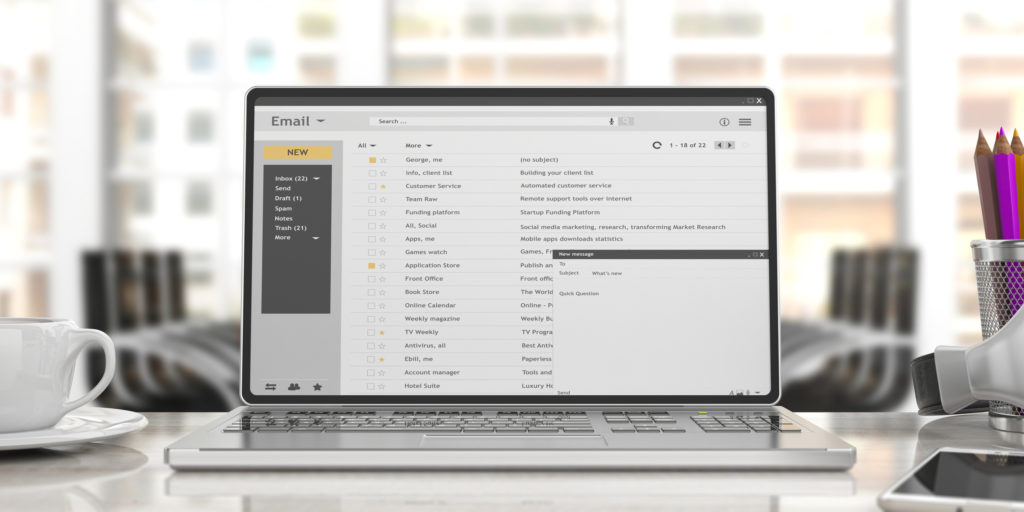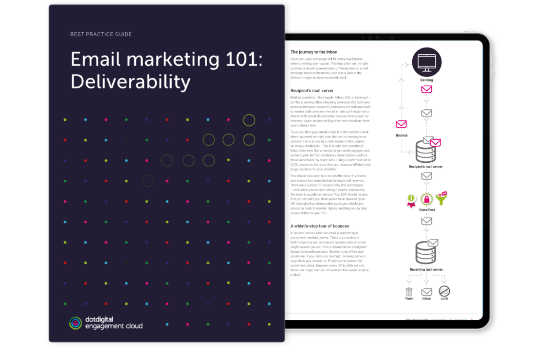Deliverability: let’s talk about Gmail


Gmail has some of the best features and filters for users that make their inbox super easy to operate and understand. And yet marketers seem mystified by gmail and often find themselves coming up against challenges.
While the gmail landscape changes fast and frequently, there are some core concepts and features that make marketing in gmail really straightforward. In this blog post I’ll explore how gmail actually makes it easy – both for its users and for email marketers in general.
Reaching the inbox in Gmail
It really couldn’t be simpler to reach the inbox in gmail, but this is a fundamental challenge many marketers face.
Gmail operates filtering at two levels: individual filtering based on user-specific behavior, and general reputation scoring applicable to all emails sent from your sending domain. This means two things:
- Emails from a brand you regularly engage with will end up in your inbox, but those same emails will end up in my spam folder if I’m not regularly opening them.
- If you send to a high proportion of users who don’t engage and enough emails end up in their junk folders, your overall domain reputation score will be negatively impacted. This makes it more likely that emails sent to new gmail sign-ups in your database will end up in the junk folder. If your reputation gets bad enough, even users who are fans may see your emails start to appear in their spam folder instead of the promotions tab.
To avoid getting a poor reputation with gmail and hitting the spam folder, all you have to do is:
- send relevant, personalized content to recipients who give explicit permission for you to send them emails
- stop sending emails to recipients who demonstrate that they’re no longer interested by not opening/clicking
It’s really that easy. Even if you get into hot water with your gmail reputation, you can rescue it very simply by stopping sending for around 30 days to let the reputation reset; and then re-ramping your daily volume while targeting only the most engaged. Follow gmail’s best practices for bulk senders, give it some time, and you’ll be back in the inbox.
That darned Gmail promotions tab
We frequently get requests from marketers asking how to get their emails out of the promotions tab and into the primary inbox. But they’re overlooking one important thing: marketing emails are promotional emails and they belong in the promotions tab.
Gmail users have been trained to look for marketing messages in the promotions tab. When they’re ready to shop, that’s where they go looking for information, sales, deals, and discounts. The primary inbox is where they expect to see 1-to-1 emails from family, friends, and colleagues, or important transactional emails like order confirmations, delivery dispatch notifications, password reset emails, etc. (although these may go into an “Updates” tab, depending on the user’s settings).

Trying to force your marketing emails out of the promotions tab is a waste of resource for two reasons:
- Firstly, recipients are more likely to complain or mark these as spam because they’re not where they’re expecting them to be. This will damage your reputation, and then you’ll be trying to get out of the spam folder instead.
- Secondly, any ‘hack’ you find that prevents marketing emails from landing in the promotions tab will be quickly picked up on by gmail’s smart filtering algorithms. As soon as it’s identified, it’ll stop working and you’ll be back in the promotions tab anyway. In the past, representatives from Gmail have even suggested that there may be penalties for brands found exploiting any loopholes to force promotional emails into the primary inbox.
Instead of trying to get out of the promotions tab, make your emails stand out in the promotions tab. Try A/B testing subject lines and really personalizing content to target recipients with relevant and valuable content instead – you’re far more likely to see an increase in ROI.
Unsubscribe as a feature
Marketers are still shy of the unsubscribe link, trying to hide it at the very bottom of emails in tiny text; or forcing recipients to scroll down a lengthy preference center to find that “unsubscribe from all” button. So when marketers spot one of Gmail’s easy-to-use unsubscribe features they get concerned.
Let’s get this out the way: unsubscribes are not a bad thing. Emails marked as spam – either because the user thinks it’s the same as deleting it, or because they’re frustrated and can’t find the unsubscribe option – count as complaints, and they have a big negative impact on the reputation of the sender. Making it easy to unsubscribe makes it less likely that you’ll see complaints, and unsubscribes don’t negatively affect your sending reputation.

In general, making it difficult for recipients to unsubscribe is not a good idea, because of the above and reasons my colleague Mathias recently went into in his contribution to a Kickbox blog post. For Gmail, unsubscribes are your friend. Remember how sending to a lot of unengaged recipients can damage your sending reputation and jeopardize inbox placement even for fans? What if those recipients instead could really easily just remove themselves from your list?
Gmail is here to help.
Firstly, there’s an unsubscribe feature at the top of the marketing email, next to the sender details. This uses the unsubscribe information in the header of the email, and means the user doesn’t have to go scrolling around to find the unsubscribe link.
Secondly, for recipients using the Gmail mobile app, there’s a prompt to unsubscribe from brands they don’t frequently engage with.
Gmail’s main focus, of course, is to help their users keep their inboxes clear of email they don’t want. But their two unsubscribe features also help you as a marketer to avoid complaints and keep your lists clear of unengaged contacts.
Reputation: domain or IP?
Unlike other mailbox providers which more heavily associate reputation with the sending IP address, when it comes to Gmail, your sender reputation is largely attributed to your sending domain.
If you’re sending sufficient volume to maintain a reputation, you should be using a custom sending domain and not a default domain shared with other brands. Sending from your own domain or subdomain allows your brand to build its own reputation with Gmail – without the time and expense of a dedicated IP – and puts you in control of your inbox placement.
Transactional emails
When it comes to transactional emails (order confirmations, password reset requests, etc.), Gmail is very good at separating out mailstreams – i.e. identifying which emails are marketing and which are transactional – and putting important transactional emails into the recipient’s primary inbox instead of the promotions tab.
There is a big caveat to this: if your transactional emails look like marketing emails because they also contain a lot of marketing-type content, then they’re more likely to end up in promotions. To make sure your transactional emails end up in the primary inbox, make sure they contain only information useful to the recipient and don’t include marketing material designed to drive more sales.
We do still recommend using separate subdomains for marketing mailstreams and transactional mailstreams (e.g. marketing.yourbrand.com and transactional.yourbrand.com). While Gmail is pretty good at separating out the mailstreams, if something unexpectedly or accidentally bad happens to the reputation of your sending domain due to a poorly executed marketing campaign, it can cause your transactional emails to end up in junk too (if they’re being sent from the same domain).
Whichever sending domains you decide to use, make sure they and your emails are properly authenticated with SPF and DKIM. If you’re a dotdigital customer, we handle this automatically for you.
In general, our customers see the same or better performance on shared IPs than dedicated IPs, and it’s faster and easier to ramp up a custom sending domain than it is to go through the process of warming a new IP. For Gmail in particular, reputation is so dependent on the sending domain that there really is nothing to be gained from the extra expenditure of provisioning a dedicated IP.
Further insights
If you’re sending from a custom domain and you’re curious about what your reputation is like with Gmail, you can find out using Google Postmaster Tools. This provides insights about your domain reputation, rate of authentication, and an indicator of reported spam and complaints. To sign up for access, go to the postmaster tools site, sign in using a Gmail or g-suite hosted email address, and add the domain you want to monitor.
If you’re a dotdigital customer, drop us an email at deliverability@dotdigital.com letting us know the domain and the email address you used so we can grant you access.
At dotdigital, we have a world class deliverability team who is here to help. We have a self-service product (Deliverability Perspective) which can help you further diagnose inbox placement issues, and we offer Deliverability Consulting packages with the team who can further advise on strategy.
For more Deliverability insight, check out our 101 guide here.



